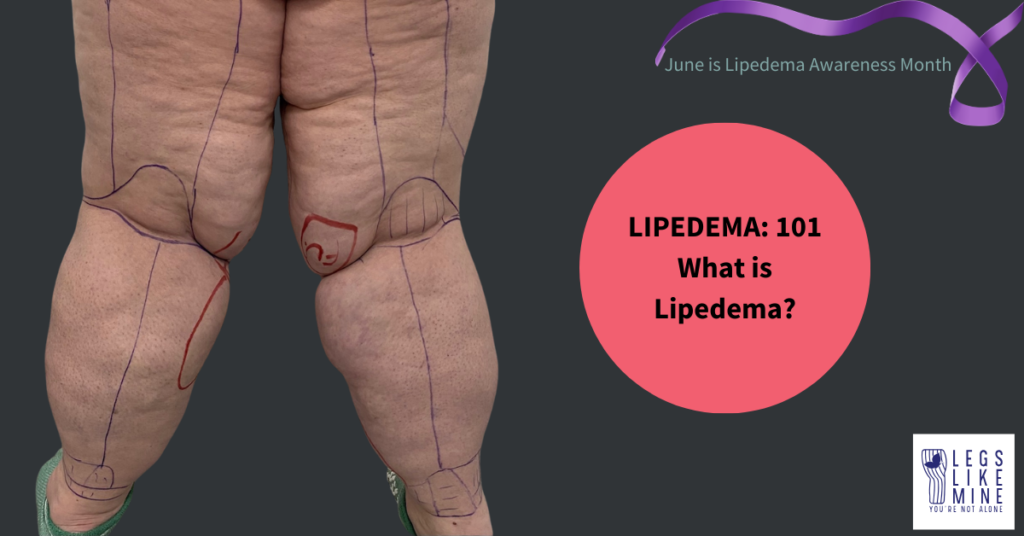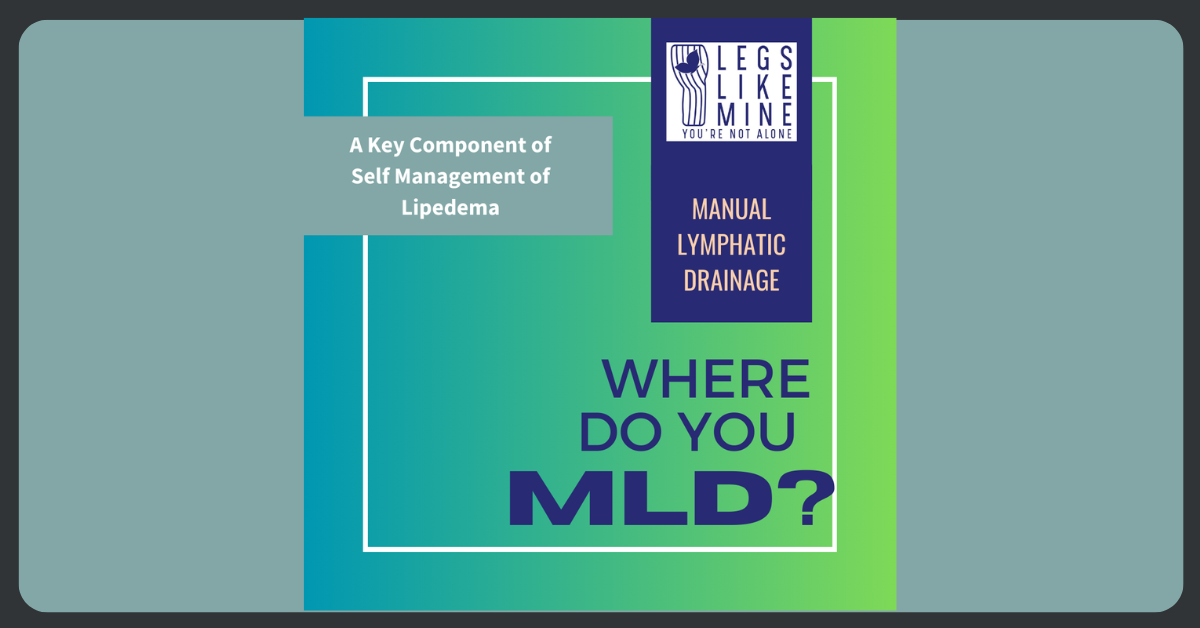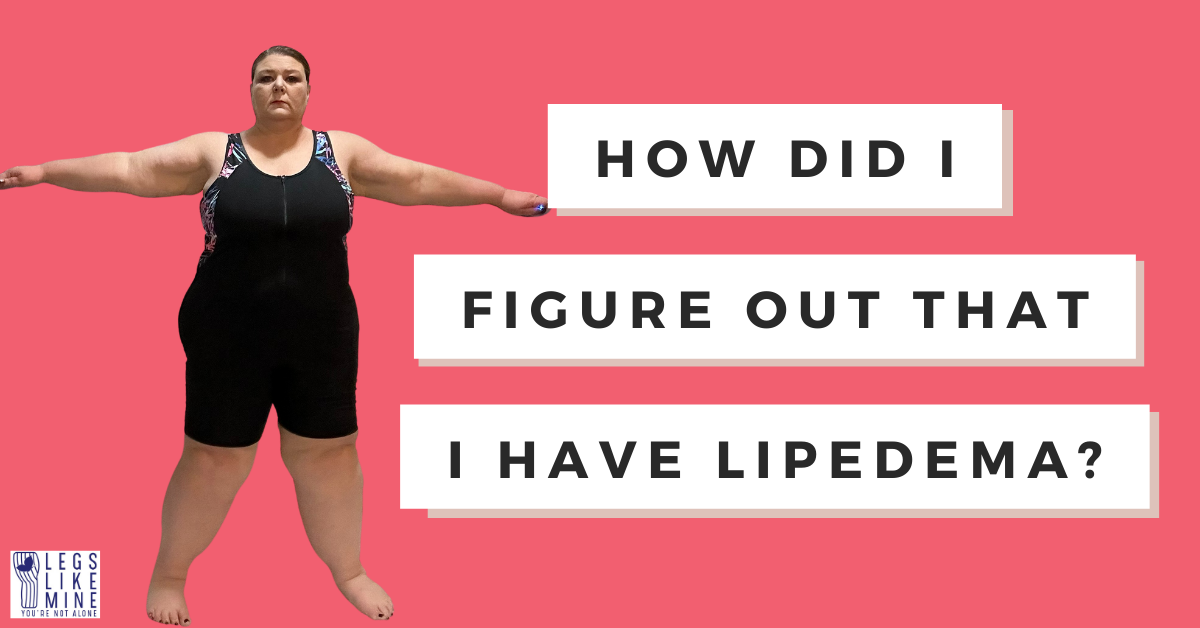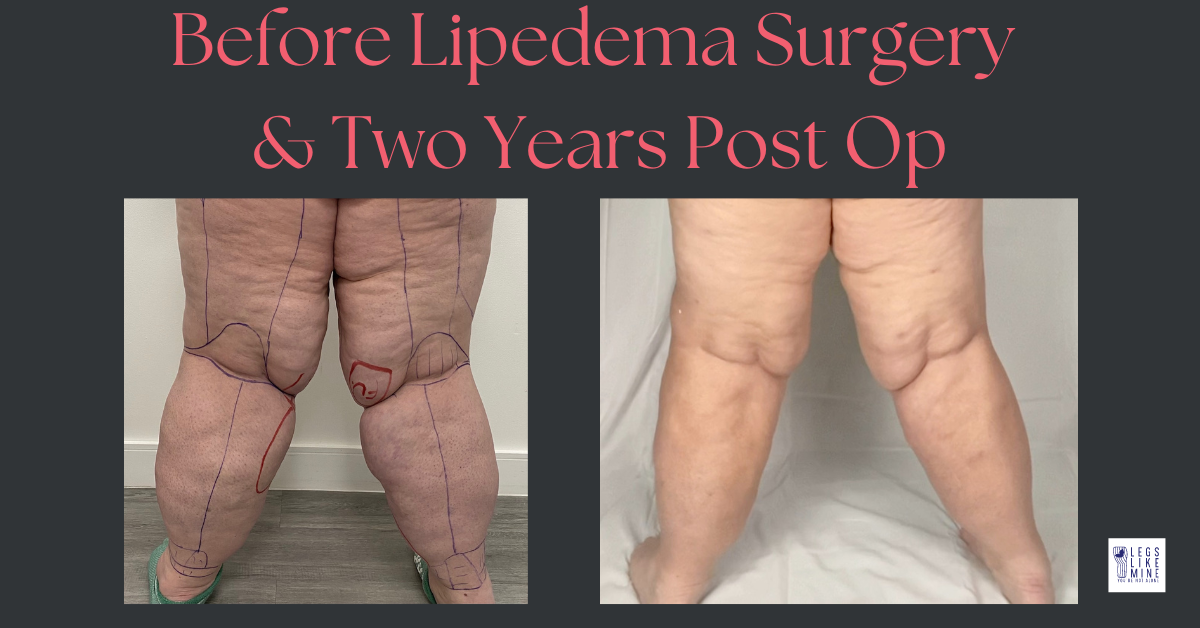Hi friends,
With our condition affecting around 11% of women, the chances are you know someone who has lipedema. It might be your mom, sister, daughter, a patient or a friend. Have you ever seen someone with large, protruding areas of fat on their legs or arms that seems disproportionate to the rest of their body? You may have assumed they were simply overweight or obese. But there’s a chance they could be suffering from a little-known condition called lipedema.
Lipedema is a chronic disorder that almost exclusively affects women. It involves an abnormal accumulation of fat cells, primarily in the legs but also potentially the arms, and other areas like the hips, stomach and buttocks. This excess fat has a unique, dense, and painful feeling to it compared to typical weight gain. Many women with the condition bruise easily, and feel fatigued often.
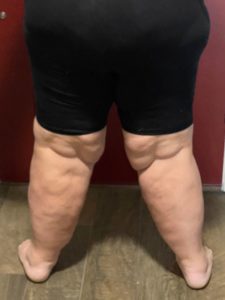
The fat accumulation in lipedema tends to occur bilaterally, meaning it develops on both sides of the body in a symmetrical pattern. It usually begins at the ankles and can spread upwards towards the hips and buttocks over time, creating a distinct “riding pant” look with fatter, column-like legs contrasted against a slimmer upper body.
It’s Not Obesity
One of the biggest misconceptions about lipedema is that it’s simply obesity. But lipedema is actually a disorder of adipose (fat) tissue, not weight gain. The fat deposits are resistant to diet and exercise, which is why lipedema is so frustrating for those affected.
Many women with lipedema are accused of being lazy or lacking willpower when the reality is their bodies are working against them. The painful fat accumulation can make mobility difficult and lead to a vicious cycle of weight gain from inactivity.
Causes and Risk Factors
The exact cause of lipedema is unknown, but it appears to involve a combination of hormonal and vascular factors. It almost always begins at puberty, pregnancy, or other hormonal shifts, suggesting estrogen may play a role.
Lipedema also tends to run in families, so there is likely a genetic component that makes some women more predisposed. Other potential risk factors include being overweight, lymphatic system impairment, and chronic immobility. There is no blood test or scan to diagnose lipedema – it is based solely on a clinical exam, and discussions about personal and family history.
Seeking Diagnosis and Treatment
Unfortunately, lipedema is still an underdiagnosed and misunderstood condition, even among many medical professionals. This lack of awareness often leads to years of suffering before women get properly diagnosed and treated.
Why It’s Important to Get a Diagnosis
Getting an official lipedema diagnosis is crucial for preventing the condition from worsening over time. Left untreated, lipedema can progressively spread and the fat deposits can become even more painful and debilitating. An early diagnosis allows for prompt treatment to manage symptoms and potentially slow or stop the abnormal accumulation of fat cells. Beyond just treating the physical manifestations, a proper lipedema diagnosis also provides validation for women who have likely faced years of dismissal and misunderstanding about their bodies. It opens doors to access supportive resources, connect with others battling the same condition, and get the empathy they deserve instead of judgement. With an accurate diagnosis, women with lipedema no longer have to suffer in silence or feel ashamed. They can get the care and compassion they need to improve their quality of life.
If you suspect you or a loved one may have lipedema, it’s important to seek out healthcare providers who are knowledgeable about the disorder. They can follow a simple Clinician’s Guide created by the Lipedema Foundation to aid in diagnosis and understand what types of referrals to make for treatment.

Jeans on a Beach Day tells the stories of several women with lipedema, and how they came to be diagnosed.
While there is no cure yet, treatments aim to manage symptoms and prevent progression. These may include compression garments, lymphatic drainage massage, liposuction surgery, and weight management (to reduce traditional fat) through diet and exercise.
The most important first step is increasing awareness so more women get the care and compassion they deserve for this painful, debilitating condition.
For more information on lipedema, check out these top online resources:
Lipedema Foundation: https://www.lipedema.org/
Lipedema Fitness: http://www.lipedemafitness.com/home.html
Fat Disorders Resource Society: https://fatdisorders.org/
Lipedema Project: https://lipedemaproject.org/
Lipedema Simplified: https://livedlipedema.com/
Talk Livedema: https://talklipedema.org/
Lipedema Treatment Guide: https://lipedematreatmentguide.com/
